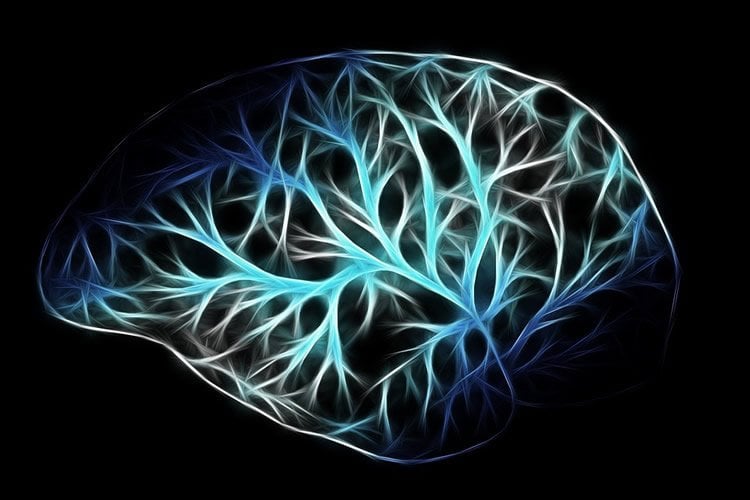Summary: Researchers say the relative silence between firing spikes of neurons help the brain to encrypt information.
Source: Medical College of Georgia at Augusta University.
It’s the comparative silence between the firing spikes of neurons that tells what they are really up to, scientists report.
“The brain appears to use these durations of silence to encrypt information,” Dr. Joe Z. Tsien, neuroscientist at the Medical College of Georgia at Augusta University says of his new Neural Self-Information Theory.
It’s widely held that neurons generate perceptions, thoughts and actions by emitting electrical pulses called action potentials or spikes. One problem with that standard measure of neuron action is that neurons are essentially always firing at some level and with spontaneous fluctuation, even when it’s not clear what is happening as a result, says Tsien, Georgia Research Alliance Eminent Scholar in Cognitive and Systems Neurobiology and a corresponding author of the study in the journal Cerebral Cortex.
He uses the analogy of an ocean surface that may look calm compared to a tsunami, but is never truly still. Many scientists have noted that there can also be variation in how even the same neuron responds to the same stimulus or even a quiet, resting state. Yet, there must be some kind of operating principle that enables us to think and act in real time in the face of this ongoing variability, he says. Brain scientists call the decades-old puzzle cracking the neural code.
Tsien’s team has evidence from monitoring mouse neurons during various activities that the magic happens when you see a group of neurons each entering an atypical state for them – not of firing – but of the relative periods of silence between the firing and entering that period at the same time.
These silent spaces between overt firing are called interspike intervals, and, the neurons having atypical intervals at the same time are part of a clique generating perceptions, actions and thoughts in real time, he theorizes.
“These cells belong to the same group, an assembly,” Tsien says. “It’s a very general finding about how neuron activity codes information.”
Applying this new Neural Self-Information Theory, they have identified 15 groups of cell assemblies in the cortex and hippocampus of the brain that work together to enable things like sleep cycles, sensing where you are and how you act in response to things you see and experience.

For example, they studied mice playing a game where a light shines on a wall and the mouse learns that if he pokes a hole in that same spot, rather than four other choices, he will get a food pellet when he returns to where he started. If he doesn’t come back in time or pokes the wrong hole, no food pellet awaits. “It’s a simple task but highly attention driven, and how the brain executes this task was poorly understood,” Tsien says.
“To identify the cell cliques that help the mouse be successful, you have to find out what each neuron’s interspike intervals looks like when they are out of their normal range of occurrence,” Tsien says. “Among all the cells you record, you then identify the ones that move into that different state – called a surprisal state – at the same time.” This time he uses the analogy of a normally chatty individual in an uncharacteristic period of silence.
“That is when these cells start to act as a clique,” he says. “That is when the neural cliques are coming together to encode a train of thought or a set of actions. If it’s what happens usually, that means it does not carry much information, it’s like a ground state,” Tsien adds.
Funding: The research was funded by National Institutes of Health, US Department of the Army, Georgia Research Alliance Brain Decoding Project, Shanghai Youth Science and Technology Sail Project.
Source: Toni Baker – Medical College of Georgia at Augusta University
Publisher: Organized by NeuroscienceNews.com.
Image Source: NeuroscienceNews.com image is in the public domain.
Original Research: Open access research for “Neural Coding of Cell Assemblies via Spike-Timing Self-Information” by Meng Li, Kun Xie, Hui Kuang, Jun Liu, Deheng Wang, Grace E Fox, Zhifeng Shi, Liang Chen, Fang Zhao, Ying Mao, and Joe Z Tsien in Cerebral Cortex. Published April 21 2018
doi:10.1093/cercor/bhy081
[cbtabs][cbtab title=”MLA”]Medical College of Georgia at Augusta University “Silence is Golden When it Comes to How Our Brains Work.” NeuroscienceNews. NeuroscienceNews, 18 June 2018.
<https://neurosciencenews.com/silence-information-encrypton-9367/>.[/cbtab][cbtab title=”APA”]Medical College of Georgia at Augusta University (2018, June 18). Silence is Golden When it Comes to How Our Brains Work. NeuroscienceNews. Retrieved June 18, 2018 from https://neurosciencenews.com/silence-information-encrypton-9367/[/cbtab][cbtab title=”Chicago”]Medical College of Georgia at Augusta University “Silence is Golden When it Comes to How Our Brains Work.” https://neurosciencenews.com/silence-information-encrypton-9367/ (accessed June 18, 2018).[/cbtab][/cbtabs]
Abstract
TrpM8‐mediated somatosensation in mouse neocortex
Cracking brain’s neural code is of general interest. In contrast to the traditional view that enormous spike variability in resting states and stimulus-triggered responses reflects noise, here, we examine the “Neural Self-Information Theory” that the interspike-interval (ISI), or the silence-duration between 2 adjoining spikes, carries self-information that is inversely proportional to its variability-probability. Specifically, higher-probability ISIs convey minimal information because they reflect the ground state, whereas lower-probability ISIs carry more information, in the form of “positive” or “negative surprisals,” signifying the excitatory or inhibitory shifts from the ground state, respectively. These surprisals serve as the quanta of information to construct temporally coordinated cell-assembly ternary codes representing real-time cognitions. Accordingly, we devised a general decoding method and unbiasedly uncovered 15 cell assemblies underlying different sleep cycles, fear-memory experiences, spatial navigation, and 5-choice serial-reaction time (5CSRT) visual-discrimination behaviors. We further revealed that robust cell-assembly codes were generated by ISI surprisals constituted of ~20% of the skewed ISI gamma-distribution tails, conforming to the “Pareto Principle” that specifies, for many events—including communication—roughly 80% of the output or consequences come from 20% of the input or causes. These results demonstrate that real-time neural coding arises from the temporal assembly of neural-clique members via silence variability-based self-information codes.






